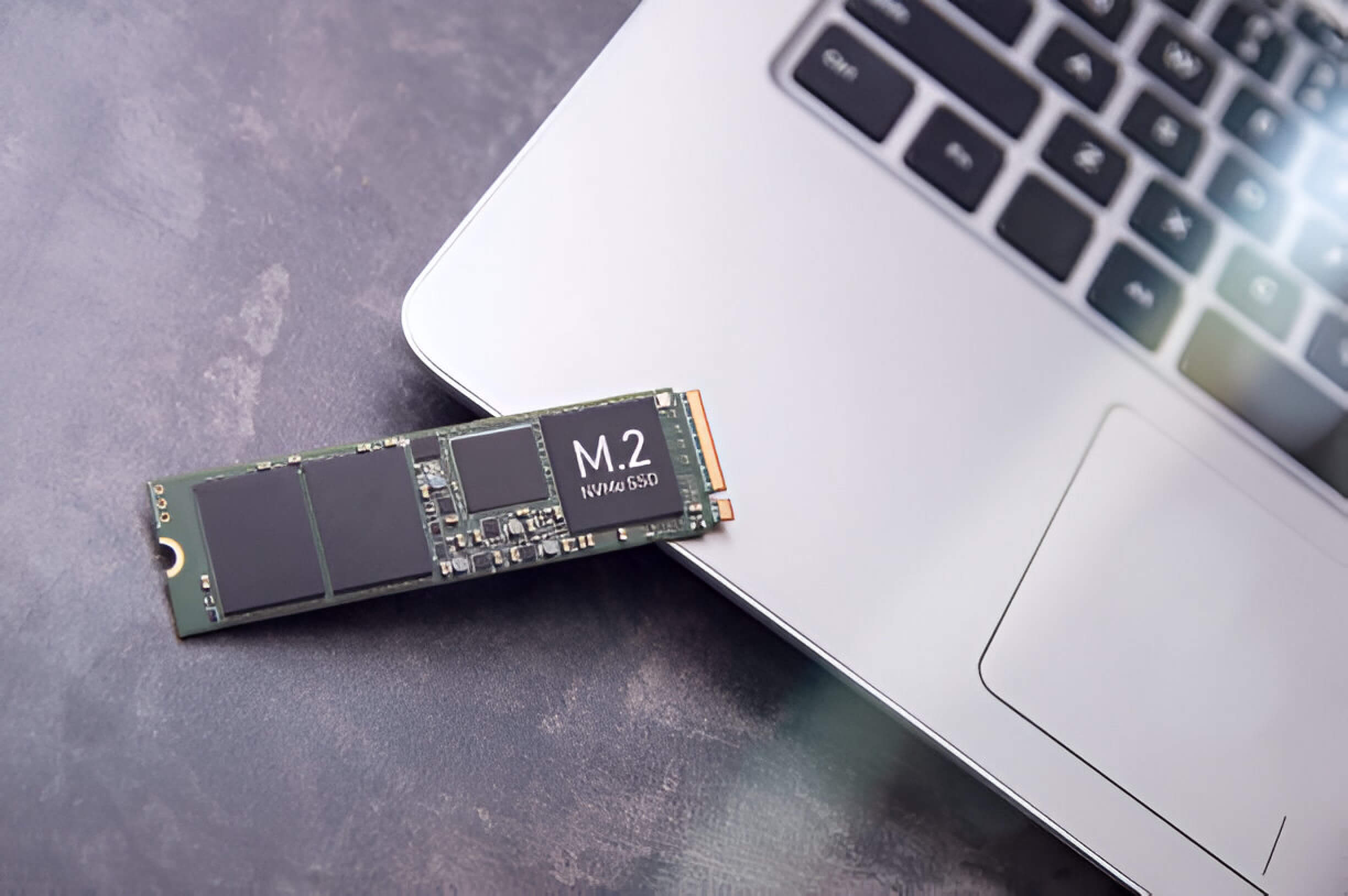In the ever-evolving world of laptop technology, Solid State Drives (SSDs) have emerged as a game-changing innovation. These storage devices have revolutionized the way laptops perform, offering significant advantages over traditional Hard Disk Drives (HDDs). With faster read and write speeds, improved reliability, and enhanced energy efficiency, SSDs have become increasingly popular among laptop users. This introduction explores the impact of SSDs on laptop performance, comparing them to HDDs, discussing various types available, and highlighting the benefits they bring to mobile computing.
Defining SSD Technology
Solid-state drives (SSDs) have revolutionized digital storage technology, offering a faster and more reliable alternative to traditional hard disk drives. At their core, SSDs utilize NAND flash memory, a type of non-volatile storage that retains data even when power is removed. This technology allows SSDs to access and transfer information at significantly higher speeds than their mechanical counterparts.
Unlike conventional drives with moving parts, SSDs have no spinning disks or read/write heads, resulting in improved durability and reduced power consumption. This makes them particularly well-suited for laptop storage, where energy efficiency and resistance to physical shock are crucial.
The architecture of an SSD consists of memory chips arranged on a circuit board, controlled by a processor called a controller. This design enables rapid data access and transfer, contributing to faster boot times, quicker application launches, and improved overall system responsiveness.
As SSD technology continues to advance, we’re seeing increased storage capacities, enhanced performance, and more competitive pricing, making them an increasingly popular choice for both consumer and enterprise applications.
SSD vs. HDD
Solid State Drives (SSDs) and Hard Disk Drives (HDDs) are two primary storage options for computers, each with distinct characteristics. SSDs utilize flash memory to store data, while HDDs rely on spinning magnetic disks. This fundamental difference leads to several key advantages for SSDs.
In terms of read/write speeds, SSDs significantly outperform HDDs. SSDs can access data almost instantly, resulting in faster boot times, quicker application launches, and speedier file transfers. HDDs, constrained by their mechanical nature, are considerably slower in these aspects.
Durability is another area where SSDs excel. With no moving parts, SSDs are more resistant to physical shock and vibration, making them ideal for portable devices. HDDs, with their spinning disks and read/write heads, are more susceptible to damage from impacts or drops.
Energy efficiency is a notable advantage of SSDs. They consume less power than HDDs, which is particularly beneficial for laptop users seeking extended battery life. The lower power consumption of SSDs also translates to reduced heat generation, potentially improving overall system stability.
While SSDs offer superior performance and reliability, HDDs still maintain an edge in storage capacity per dollar. For users requiring vast amounts of storage at a lower cost, HDDs remain a viable option. However, as SSD technology advances and prices continue to decrease, the gap in this area is steadily narrowing.
Types of SSDs for Laptops
When it comes to choosing an SSD for your laptop, it’s essential to understand the different types available. The three main categories are SATA, NVMe, and M.2 SSDs, each with its own characteristics and performance levels.
SATA SSDs are the most common and use the same interface as traditional hard drives. They offer good performance and are compatible with most laptops, but they’re limited by the SATA interface’s maximum speed.
NVMe SSDs utilize the PCIe interface, allowing for significantly faster data transfer rates compared to SATA. These drives use the NVMe protocol, which is designed specifically for SSDs and offers lower latency and higher throughput.
M.2 SSDs refer to a form factor rather than an interface. These compact drives can use either the SATA or NVMe protocol, depending on the specific model. M.2 SSDs connect directly to the motherboard via an M.2 slot, which can support different numbers of PCIe lanes, affecting the drive’s potential speed.
When selecting an SSD, consider your laptop’s compatibility, your performance needs, and your budget. While NVMe drives offer the highest speeds, they may not be supported by older laptops. SATA SSDs provide a good balance of performance and compatibility, while M.2 drives offer a space-saving solution for ultrabooks and gaming laptops.
How SSDs Improve Laptop Performance
Solid-state drives (SSDs) have revolutionized laptop performance, offering significant improvements over traditional hard disk drives (HDDs). One of the most noticeable enhancements is in boot times, with SSD-equipped laptops starting up in mere seconds compared to the minute or more required by HDD systems. Application loading also sees a dramatic boost, as programs launch almost instantly, allowing users to begin work without frustrating delays.
File transfer speeds are another area where SSDs excel, enabling rapid movement of large files and folders. This efficiency is particularly beneficial for users who frequently work with multimedia content or large datasets. Multitasking capabilities are greatly enhanced as well, with SSDs allowing for seamless switching between multiple applications without the lag often experienced with HDDs.
The overall responsiveness of laptops with SSDs is markedly improved. From opening files to saving documents, every operation feels snappier and more fluid. This increased speed not only saves time but also contributes to a more satisfying user experience, making SSDs a game-changer for laptop performance.
Capacity and Cost Considerations for Laptop SSDs
When selecting an SSD for your laptop, it’s crucial to balance storage capacity with cost-effectiveness. Storage capacity options typically range from 128GB to 2TB or more, with larger capacities offering more space for files, applications, and media. However, as capacity increases, so does the price.
Price per gigabyte tends to decrease as capacity increases, making larger SSDs more cost-effective in the long run. For example, a 1TB SSD might cost less per gigabyte than a 256GB model. Consider your storage needs carefully, factoring in your current usage and potential future requirements.
SSD lifespan is another important consideration. Modern SSDs have improved durability and can typically last for several years under normal use. However, larger capacity SSDs often have longer lifespans due to wear leveling across more cells.
When evaluating your storage needs, consider the types of files you work with, the applications you use regularly, and your data backup strategy. If you frequently work with large files or store extensive media libraries, a larger capacity SSD may be necessary.
Budget considerations play a significant role in SSD selection. While higher capacity drives offer more storage, they also come at a premium. Assess your budget and determine the best balance between capacity and cost for your specific needs. Remember, external storage solutions can supplement your internal SSD if needed, providing a cost-effective way to expand storage without replacing your laptop’s primary drive.
Adding an SSD to Your Laptop
Installing an SSD in your laptop can significantly boost its performance and breathe new life into an aging machine. Begin by ensuring compatibility between your laptop and the chosen SSD. Next, back up all your data as a precautionary measure. The physical installation process typically involves removing the laptop’s back panel, locating the existing drive, and carefully swapping it with the SSD.
Data migration is a crucial step in this upgrade. Use cloning software to transfer your operating system, applications, and files to the new SSD. Popular options include Acronis True Image, Macrium Reflect, or Samsung Data Migration for Samsung SSDs.
After installation, you may need to adjust BIOS settings to ensure your laptop recognizes the new drive. Some laptops might require enabling AHCI mode for optimal SSD performance. Once everything is set up, you should notice a significant improvement in boot times, application loading, and overall system responsiveness.
Remember, while SSD installation can be a DIY project, if you’re uncomfortable with the process, it’s best to seek assistance from a professional to avoid potential damage to your laptop.
Maintaining Your Laptop SSD for Optimal Performance
Solid-state drives (SSDs) have revolutionized laptop performance, but maintaining them properly is crucial for long-term efficiency. One key aspect of SSD optimization is enabling the TRIM command, which helps manage deleted data and maintains write speeds. Most modern operating systems support TRIM by default, but it’s worth verifying in your system settings.
Regular firmware updates are essential for your SSD’s health and performance. Manufacturers often release updates to improve stability, fix bugs, and enhance overall functionality. Check your SSD manufacturer’s website periodically for the latest firmware versions.
Proper disk management is another vital factor in SSD maintenance. Avoid filling your SSD to capacity, as this can negatively impact performance. Aim to keep at least 10-20% of your drive space free for optimal operation.
Contrary to popular belief, defragmentation is unnecessary and potentially harmful for SSDs. Unlike traditional hard drives, SSDs don’t suffer from fragmentation issues due to their unique data storage method. In fact, excessive defragmentation can reduce an SSD’s lifespan by increasing write operations.
By following these optimization techniques, you can ensure your laptop’s SSD maintains peak performance and longevity, providing you with a smooth computing experience for years to come.
Future of Laptop Storage

The future of laptop storage is rapidly evolving, with emerging SSD technologies promising unprecedented speeds and capacities. QLC NAND is at the forefront of this revolution, offering higher storage densities and more affordable prices for consumers. This technology allows for the creation of larger capacity SSDs without significantly increasing costs.
Another groundbreaking innovation is 3D XPoint, a non-volatile memory technology that bridges the gap between DRAM and NAND flash. It offers lower latency and higher endurance compared to traditional SSDs, making it ideal for demanding applications and workloads.
PCIe 4.0 is also transforming laptop storage capabilities. This new interface doubles the bandwidth of its predecessor, allowing for faster data transfer speeds and improved overall system performance. As PCIe 4.0 becomes more widely adopted, we can expect to see a new generation of ultra-fast SSDs hitting the market.
These storage innovations are paving the way for next-generation SSDs that will redefine laptop performance. With increased speeds, larger capacities, and improved reliability, future laptops will be better equipped to handle complex tasks and store vast amounts of data, all while maintaining the portability and efficiency that users demand.










